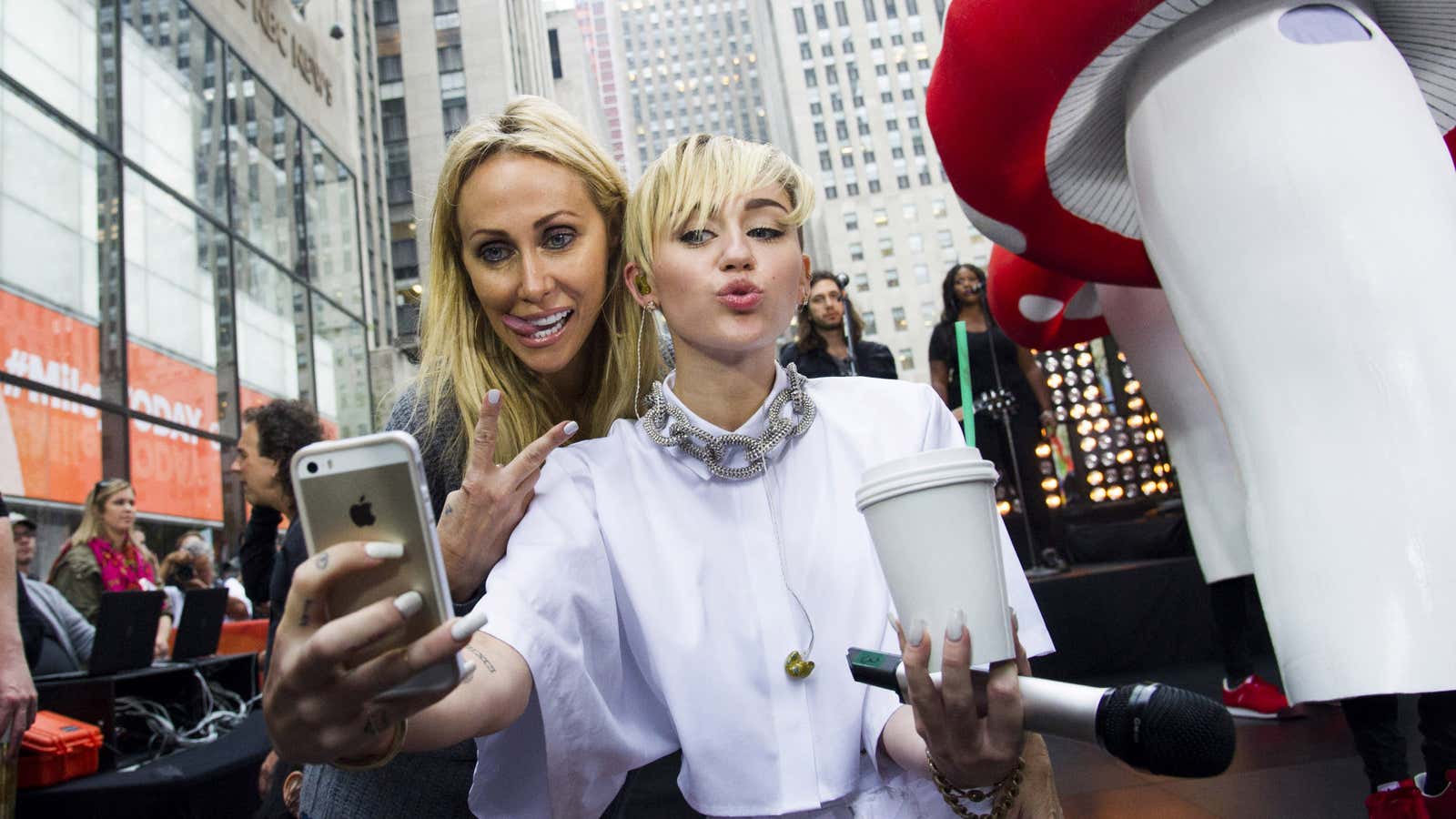The internet is the last cultural gatekeeper. Its vehicles are driving so fast, the doors are wide open. So suddenly, Art is no longer a pretentious exhibit of novelty, a product of a singular genius. The Artist is no longer one whose object is co-signed by a taste-making institution.
My feminist collective, Go! Push Pops—a transnational, queer, radical feminist performance collective I co-lead with Elisa Garcia de la Huerta—took renowned artist Luis Gispert’s 2002 Block Watching video…
…and turned it into this:
We hijacked it, never asking his permission. Then the man himself messaged us asking us to perform his piece at the Brooklyn Museum’s annual artists’ ball.
We essentially displaced Luis Gisbert. But he didn’t care. After all, each re-performance of the piece, however far removed from the artist himself and his original, only served to reify the value of Block Watching.
Museums, albeit late to the game, are embracing this. They have to, in order to compete in the digital domain like the rest of us. The Museum of Modern Art (MOMA) , for example, is developing an app designed for museum goers to take photos of its works and share them instantly with friends on the web, a move which challenges a long standing no-photography rule in museum settings.
Like the MOMA app, inviting viewers to interact and express their unique visual take on the work is what generates web presence. Web presence is what generates revenue. If MOMA needs your iPhone to feel timely and accessible, we can say art has been reborn. Culture making culture. Art becoming art. People engage with work, whether that means putting it up on a pedestal or ripping it to pixel shreds. The museum turns into cultural mall, open to the general public.
It begs the question: If a painting isn’t the backdrop of 5,000 European tourists’ haphazard selfies, is it really even a painting at all? George Clooney maintains selfies are so addictive we’ve stopped living our lives in an effort to record them. Meanwhile, the Wall Street Journal reports new research shows that taking photos actually helps you forget the object you meant to remember.
Maybe we need to read the selfie as a new cultural form—as Art. Everything else from shit to glitter has been passed off as art. Genevieve Belleveau—an artist who created a #selfieaffirmation series of six-second looping videos posted to the social media app Vine—sees the selfie as a positive affirmation of existence. It is much like self-affirmation mantras people say or lines repeated in front of the mirror (before the internet became the crack of the super ego; see #SelfieOlympics).
Miley is the Queen of the Selfie, and she also typifies how fine art and popular culture in America are both essentially the art of cultural appropriation concealed. The rise of Miley Cyrus, which happened as much through sincere fans as of people mocking her, indicates the leveling of the cultural playing field.
And so, my feminist collective actually has a lot in common with … Miley Cyrus. She’s not very talented, or good at singing. She’s no more smart or beautiful than the average pop star. Yet her stunt at the recent music awards hit the drama jugular; the virus of passionate social media rocketed her album sales and social capital to exponential levels. They eagerly chewed her up and spit her back out—just as we do. All the time.
The work of Go! Push Pops occurs on two levels: There is the physical performance and there is the armature of promotion that happens simultaneously via the web. The internet is the great smokescreen upon which we project our manufactured fame. If the performance can’t surf the waves of social media, it will die.
In many ways our art hinges on a dangerous tension: our willingness to be present to the experience of the performance versus our impulse to leave the performance, turn to our devices, and provoke the tides of social media to flow our way. We’re founded on the principle of feminist embodiment, and yet, the cult of internet celebrity beckons always, luring us with its promise of power and status. As artists, we must generate work and preserve it simultaneously. We preserve it by giving it away rather than selling it through the old channels.
But on social media, we’re not the customers, we’re the products. Our attention span is as good as gold to advertisers, promoters and other culture-makers.
Thus, everyone becomes an artist playing at the internet like a game of exquisite corpse. Images are no longer codified by makers, owners, contexts and frames. Who generated the image and by what means matters little. The Artist that strives to maintain his capital A must remain one step removed from the masses, the mindful visionary bold and clever enough to foretell the ebbs and flows of an image epidemic. All the rest of us remain trigger-happy culture-vultures, consumers cum producers of media, and we trust the pulse of the tribe.
Everyone becomes an image-maker playing a conscious role in human evolution. I photograph, therefore I am. Keep snapping selfies, and one day soon, the zeitgeist will come knocking at your door.
